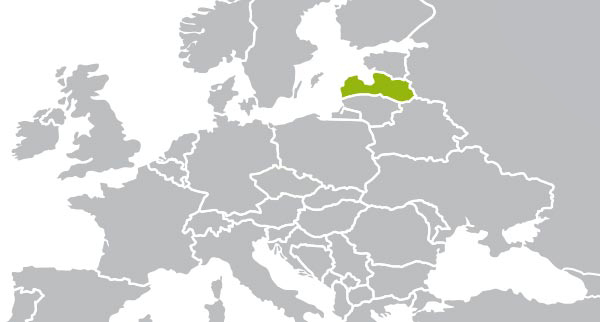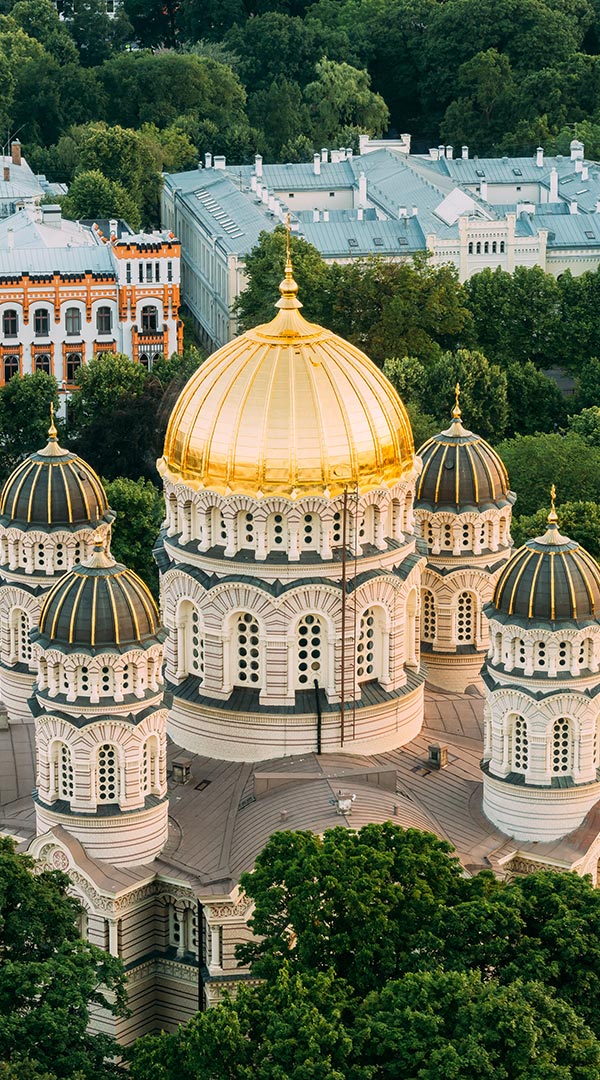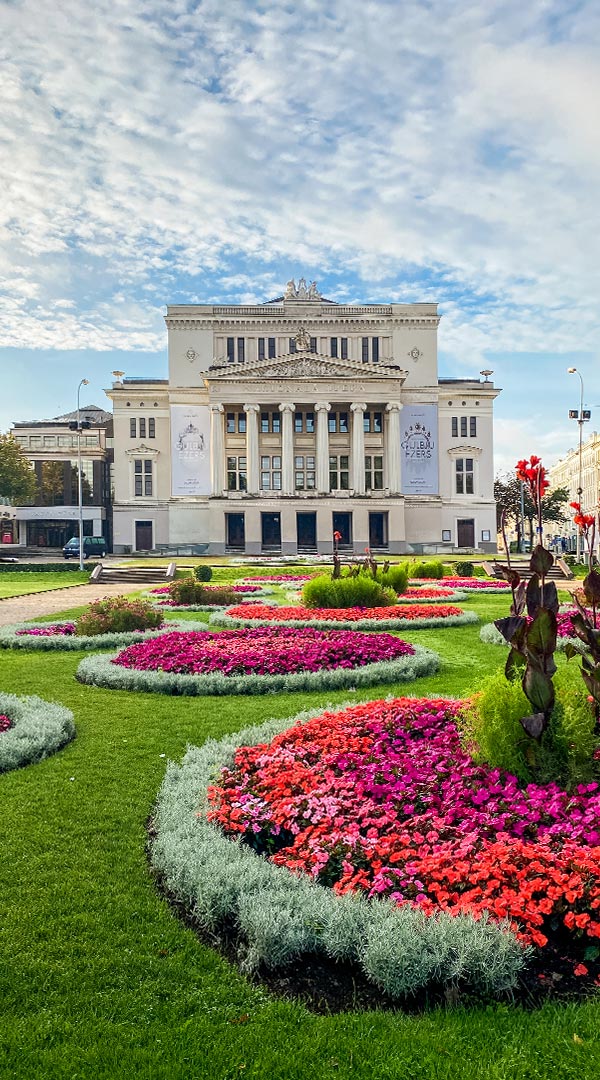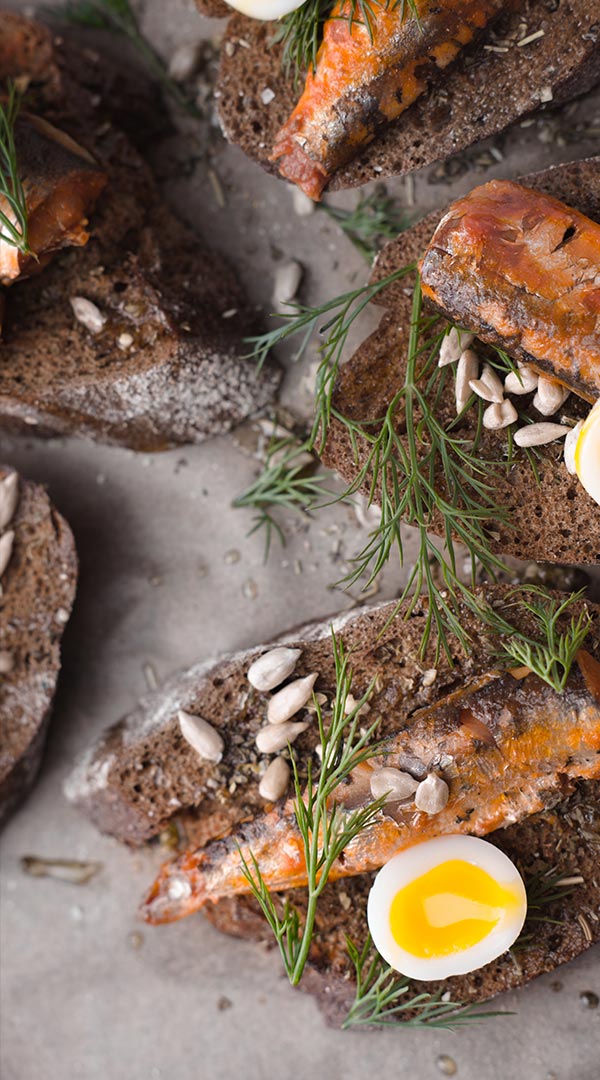
A myriad tapestry of sea, lakes and woods awaits you in Latvia, a county that is best described as a vast un-spoilt parkland with just one real city – the cosmopolitan capital, Riga.
Riga is the largest city among the Baltic countries. The best way to see the Old Town is on foot, which is a very artistic city of UNESCO cultural heritage with 800-year-old buildings with Art Nouveau architecture style as well as gothic and Baroque-style churches.
St Peter’s Church
House of the Black Heads, Riga
The House of The Blackheads, Dome Cathedral St. Mary the Virgin, the Swedish Gate, Powder Tower (the only original tower still intact on the city wall now used as the Military Museum), The Three Brothers, are the oldest medieval dwelling houses in Riga, the Latvian National Opera house, Freedom Monument and St Peters Church are all to be enjoyed.
Though this country may be small in stature, the amount of personal space that it provides is enormous. You can always secure yourself a chunk of pristine nature, be it for trekking, cycling, or dreaming away while lying on a white-sandy beach surrounded by pine-covered dunes.
Having been invaded by every regional power throughout its history, Latvia has much more cultural layers and a less homogenous population than its neighbors.
Latvians consider themselves to be the least pragmatic and the most artistic of the Baltic nationalities and they highlight this to prove the point with a multitude of festivals and a charming, devil-may-care attitude – well, in their eyes, a more subdued Nordic version of it.
Jurmala is a long string of townships with Prussian-style villas, each unique in shape and decor. Even during the height of communism, Jurmala was the place to be seen and is well known for its natural resources – curative mud, mineral waters, and pine forest. Take the time to explore the Jomas Pedestrian district, which is full of cafes and souvenir shops.
Nature, Latvia
Riga
„PARIS OF THE EAST“

Riga
Sigulda, the gateway to the Gauja Valley is an enchanting spot with delightful surprises tucked behind every dappled tree. Locals proudly call their town the ‘Switzerland of Latvia’. Sigulda and neighboring Turaida Castle, are to be explored and the expansive gardens enjoyed.
Liepāja is a port city on Latvia’s west coast. It is well known for the long Liepāja Beach, on the Baltic Sea. In the centre of the town, the Latvian Musicians’ Alley of Fame has plaques dedicated to the nation’s musicians. The Holy Trinity Cathedral houses a huge mechanical organ.

National Opera and Ballet
Karosta Prison, built around the turn of the 19th/20th century as part of a large military complex. „Karosta“ means ‚war harbour‘ – so its main purpose was as a naval base. Used by the Nazis and then the KGB as prison until they had to abandon the place after the collapse of the Soviet empire, it is now a museum.
Get to know the Latvian cuisine with all the unique dishes, including kvass drink, made with mushrooms, and dark rye bread, Beetroot soup, Speck – a type of smoked bacon made from pork belly, from the sea smoked cod, pike, and eel, Rye bread, in plenty of different types, including dark or sweet sourdough.

Delicious food
And for dessert, Debessmanna, a quintessential Latvian dessert made with berries, farina or cream of wheat, water, and sugar, Rupjmaizes kārtojums, a traditional and fairly simple Latvian dessert consisting of dark rye bread, whipped cream or cream cheese, and cranberry jam, or Latvian Honey Cake – a tangy sour cream and walnut filling is spread between five thin layers of honey cake. You have to try the national drink Riga Black Balsam (Rīgas Melnais balzams), a potent herbal bitter which packs a punch at 45% alcohol.
So, welcome to Latvia!





